A properly functioning fuel line is crucial for both vehicle safety and optimal performance. The fuel line’s primary role is to ensure the efficient delivery of fuel from the tank to the engine, which is vital for the car’s operation. However, when a fuel line develops a leak, it poses significant safety hazards
Fuel line leaks can lead to dangerous situations, such as fire risks, by allowing gasoline to escape and decreased engine performance due to insufficient fuel delivery.
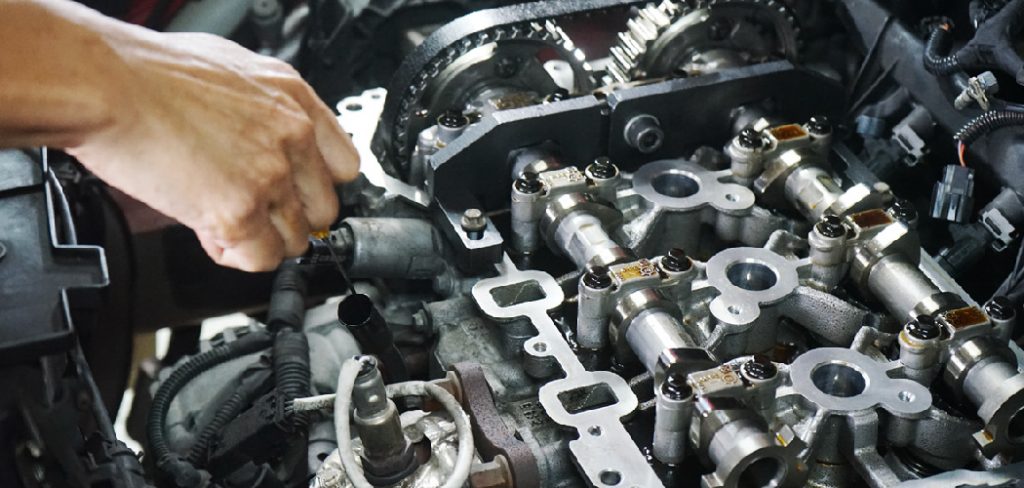
To ensure safety and vehicle integrity, it is essential to understand how to fix a fuel line leak. The process involves identifying the leak, assessing its severity, and executing the necessary repairs to restore the fuel line’s integrity. By following a systematic approach, these issues can be resolved effectively, safeguarding the vehicle’s performance and ensuring the safety of its occupants.
Understanding Fuel Lines and Their Function
Fuel lines are a critical component of a vehicle’s fuel system, serving as the conduits that transport fuel from the fuel tank to the engine. These lines ensure the smooth and consistent delivery of fuel, which is essential for the internal combustion process that powers the vehicle. There are three primary types of fuel lines commonly used in vehicles: metal, rubber, and composite.
Metal fuel lines are typically made of steel or aluminum, chosen for their durability and ability to withstand high pressure. These are often used in areas exposed to high temperatures or near moving parts, protecting the line from physical damage and extreme conditions. Rubber fuel lines, on the other hand, are more flexible and easier to route around the vehicle’s various components.
They are often used in lower-pressure applications, such as connections between rigid sections and components that require some flexibility due to engine vibrations. Composite fuel lines combine materials like polytetrafluoroethylene (PTFE) and stainless steel braiding, offering a balance of flexibility and strength while resisting chemical degradation.
In addition to the actual lines, the fuel system includes components such as fuel pumps and filters. The fuel pump draws fuel out of the tank and delivers it at the appropriate pressure to the engine. Filters remove impurities from the fuel, preventing contamination and ensuring efficient engine performance.
A fuel line leak can manifest through several noticeable symptoms. One of the most obvious signs is the smell of gasoline, which indicates fuel is escaping into the environment. Fuel stains on the ground beneath the vehicle also suggest a leak, along with decreased fuel efficiency, as the vehicle consumes more fuel than necessary. Additionally, a drop in engine performance may be noticed due to insufficient fuel reaching the engine.
Monitoring the vehicle’s dashboard for warning lights related to the fuel system is crucial. These indicators serve as an early warning system for fuel line leaks or other related issues. Addressing these symptoms promptly can prevent more severe damage and maintain the vehicle’s safety and performance. By understanding the structure and function of fuel lines, vehicle owners can better identify and address issues, promoting a reliable and efficient driving experience.

Safety Precautions Before Starting Repairs
Before attempting any repairs on the fuel line, it is essential to take certain safety precautions to prevent accidents and ensure a successful outcome.
Gathering Necessary Tools and Materials
The correct tools and materials will make the repair process smoother and safer. Essential tools include wrenches and screwdrivers suitable for loosening and tightening clamps and connectors. Fuel line clamps are necessary to secure new lines in place. Safety goggles are crucial to protect your eyes from any unexpected fuel sprays or debris. It is also recommended to have a fire extinguisher nearby, specifically rated for flammable liquids.
In addition to tools, gather replacement parts like fuel line sections that match your vehicle’s specifications and high-quality connectors to ensure a secure and durable repair. Having these materials ready will minimize downtime during the repair and help avoid the temptation to reuse damaged or inadequate parts.
Safety Measures
Safety cannot be overstated when working on a vehicle’s fuel system. Perform repairs in a well-ventilated area to ensure hazardous fumes do not accumulate. Avoid environments where open flames, sparks, or static electricity are present, as gasoline vapors are highly flammable and can ignite with minimal provocation.
Before starting the repair, disconnect the vehicle’s battery to eliminate the risk of electrical sparks. Then, relieve the fuel system pressure; this step is crucial to prevent sudden fuel sprays when lines are disconnected or opened. Consult your vehicle’s manual for specific instructions on safely releasing this pressure, usually by loosening a specific valve or connector while catching any expelled fuel with a suitable container.
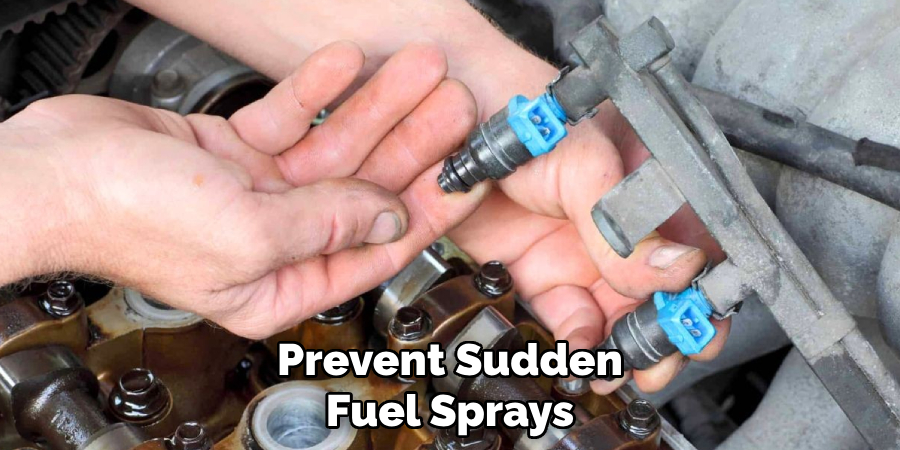
By taking these precautions, you will enhance your safety and increase the likelihood of successfully repairing any fuel line leaks without causing further damage to the vehicle or injuring yourself in the process.
How to Fix a Fuel Line Leak: Locating the Fuel Line Leak
Identifying the precise location of a fuel line leak is a crucial step in addressing the issue. This process involves both visual inspection and specialized tests to pinpoint the source of the problem accurately.
Visual Inspection
Conducting a thorough visual inspection is the first step in detecting a fuel line leak. Begin by ensuring the vehicle is in a well-lit area, and use a flashlight if necessary for enhanced visibility. Check the length of the fuel lines meticulously for any signs of physical damage, wear, or corrosion. Look for visible leaks, such as wet spots or areas that appear moist with fuel residue. A well-maintained vehicle should exhibit clean and dry fuel lines, so any visible wetness can indicate a problem.
Pay particular attention to areas where the fuel lines connect to other components, such as fuel pumps, filters, and injectors, as these are common points for leaks. Check for loosened or damaged connectors and clamps, which can compromise the seal and allow fuel to escape. Also, inspect the surrounding areas for discoloration or fuel stains, which may provide clues to the leak’s location.
Performing a Leak Test
After completing the visual inspection, performing a leak test with soapy water can help confirm suspected leaks. Mix a solution of water and a few drops of dish soap and generously apply it to the suspect areas using a brush or spray bottle. Observe the applied areas for forming bubbles, which occur when escaping gas from the leak and interacting with the soap solution. Bubbles are a clear indicator of a leak, pinpointing exact locations that require repair.
In addition to the soapy water test, utilizing a fuel pressure gauge offers another level of diagnostic precision. Connect the gauge to the fuel system and start the vehicle, allowing the fuel lines to be tested under operating pressure. A drop in pressure on the gauge without corresponding engine operation can suggest a leak, further confirming trouble spots identified during the visual inspection. Using a pressure gauge is particularly beneficial for detecting minor leaks that may not immediately manifest during a visual check or soapy water test.

By following these methods, you can effectively locate a fuel line leak. This allows for a targeted repair approach and contributes to maintaining the vehicle’s performance and ensuring overall safety. Once the leak is confirmed, the repair process can be planned and executed with confidence that the right issues are being addressed.
How to Fix a Fuel Line Leak: Repairing the Fuel Line Leak
Temporary Fixes
When dealing with a fuel line leak, temporary fixes can be applied while preparing for a more permanent resolution. Fuel line tape and clamps are commonly used to temporarily seal small leaks and prevent fuel loss. First, clean the affected area to effectively use fuel line tape to ensure good adhesion. Wrap the tape tightly around the leak, overlapping each layer to create a strong seal without obstructing fuel flow. Similarly, secure a fuel line clamp around the leak site, ensuring it fits snugly without pinching the fuel line, which could impede flow.
Permanent Repairs
Permanent repairs are necessary for a long-lasting solution, ensuring the fuel line operates safely and efficiently. Begin by cutting out the damaged section of the fuel line with a tubing cutter, making sure the cuts are clean and straight. This precision is crucial for a good fit with the replacement segment.
Next, high-quality fuel line connectors or couplings are used to join the new section of the fuel line with the existing one. Insert the ends of the line into the connectors, and make sure they fit tightly to prevent future leaks. Secure the connections with clamps or appropriate fittings to maintain pressure stability throughout the system.
When managing repairs, it’s vital to replace any rubber hoses with fuel-rated hoses that can withstand exposure to gasoline without degrading. This proactive measure prevents the recurrence of leaks and ensures the longevity of the repair.
Finally, after repairs are completed, run the vehicle and monitor the fuel line for any signs of leakage. Ensuring all connections are secure and leak-free is critical to maintaining vehicle performance and safety. By following these steps for both temporary and permanent repairs, you can effectively address fuel line leaks and contribute to your vehicle’s reliable operation.
Testing the Repair
Repressurizing the Fuel System
Once the repair on the fuel line has been completed, it’s crucial to repressurize the fuel system to ensure it functions correctly. Begin by reconnecting the vehicle’s battery if it was disconnected during the repair process. Next, turn the ignition to the “On” position without starting the engine. This action will activate the fuel pump, allowing the system to build pressure. Let the ignition remain in this position for a few seconds before turning it off. Repeat this process a couple of times to ensure the fuel system is adequately pressurized.
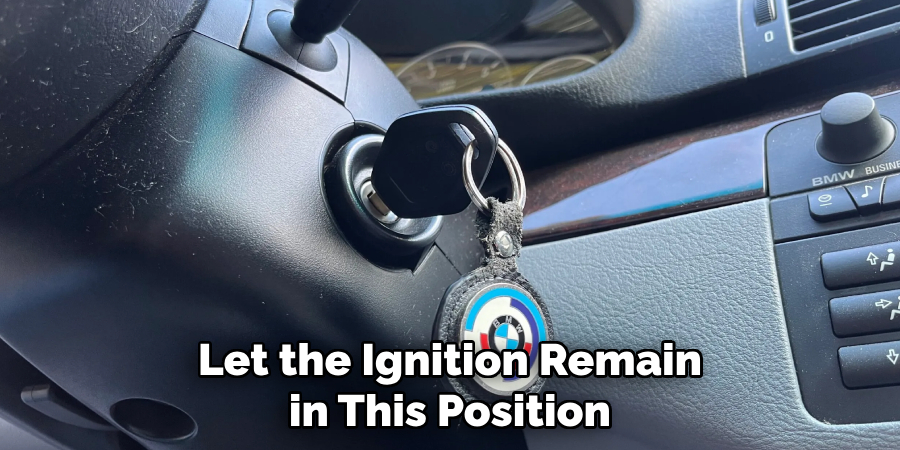
While the fuel system is being depressurized, carefully inspect the repaired area for any signs of leaks. This includes checking for visible wetness and listening for the sound of escaping gas. If there are no signs of leakage, the repair is likely secure. However, any indications of a leak should be addressed immediately to prevent further issues.
Taking a Test Drive
To further validate the repair, take the vehicle for a short test drive. This step is important as it allows you to evaluate the repaired fuel line under normal driving conditions. During the drive, pay attention to the vehicle’s performance, particularly any fluctuations in power or unusual smells that may indicate a problem.
After completing the test drive, park the vehicle on a flat surface and conduct another thorough inspection of the repaired area. Look for new signs of leakage, such as fuel stains or moistness around the repair site. Monitoring the area after the test drive is essential to ensuring the long-term success of the repair and maintaining the vehicle’s safety and reliability.
Preventive Maintenance Tips
Regular Inspections
Regularly inspecting your vehicle’s fuel lines and connections is critical in preventive maintenance. During routine checkups, such as oil changes or other services, make it a priority to visually assess the fuel system’s condition. Look for signs of wear, corrosion, or damage, especially where connections are made, as these are common areas where leaks can initiate. Identifying potential issues early can prevent costly repairs in the future and ensure your vehicle operates safely and efficiently.
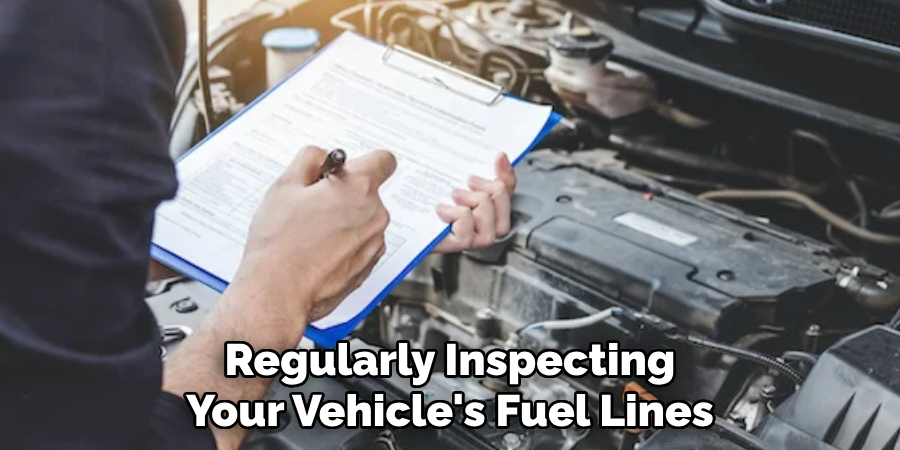
Choosing Quality Parts
The longevity and reliability of your vehicle’s fuel system depend significantly on the quality of your chosen components. Opting for high-quality fuel lines and connectors can significantly reduce the likelihood of future leaks. Quality parts are built to withstand the stresses of constant fuel flow and resist degradation from exposure to gasoline and environmental elements. It’s essential to adhere to the manufacturer’s recommendations when selecting fuel system components. These recommendations ensure compatibility and safety, maintaining optimal vehicle performance.
Incorporating these preventive maintenance tips into your routine can substantially enhance your vehicle’s reliability and safety. By staying proactive in inspections and selecting quality components, you decrease the risk of leaks and other fuel system failures, contributing to your automobile’s overall health and longevity.
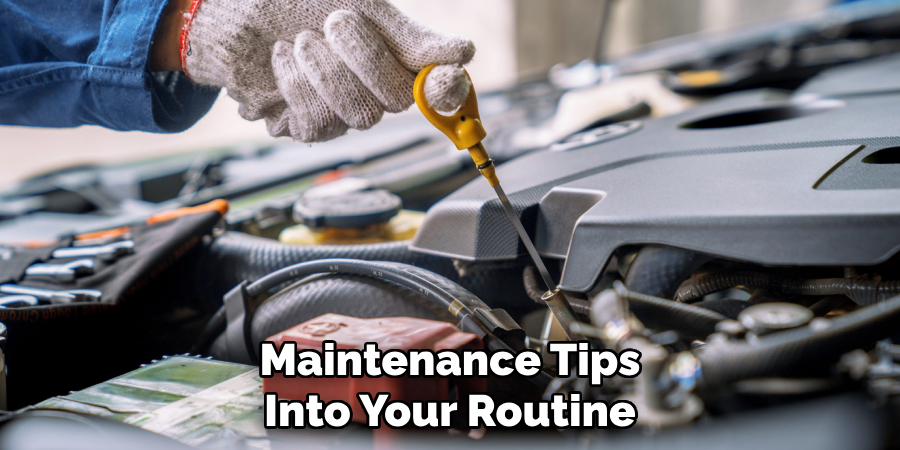
Conclusion
In summary, understanding how to fix a fuel line leak involves a combination of temporary and permanent repair strategies. Temporary solutions like fuel line tape and clamps can offer a quick fix, whereas precise methods, such as replacing damaged segments and using high-quality connectors, provide a lasting remedy. Safety and meticulous attention to detail are paramount throughout the repair process to prevent fuel loss and potential hazards.
By taking proactive preventive measures and scheduling regular inspections, vehicle owners can maintain an efficient and safe fuel system, reducing the likelihood of leaks. Addressing fuel line issues promptly is not merely a matter of vehicular maintenance; it is critical for ensuring optimal performance and safeguarding the vehicle against potential risks. Ultimately, these practices contribute to the long-term reliability and safety of your vehicle, providing peace of mind and a smoother driving experience.
